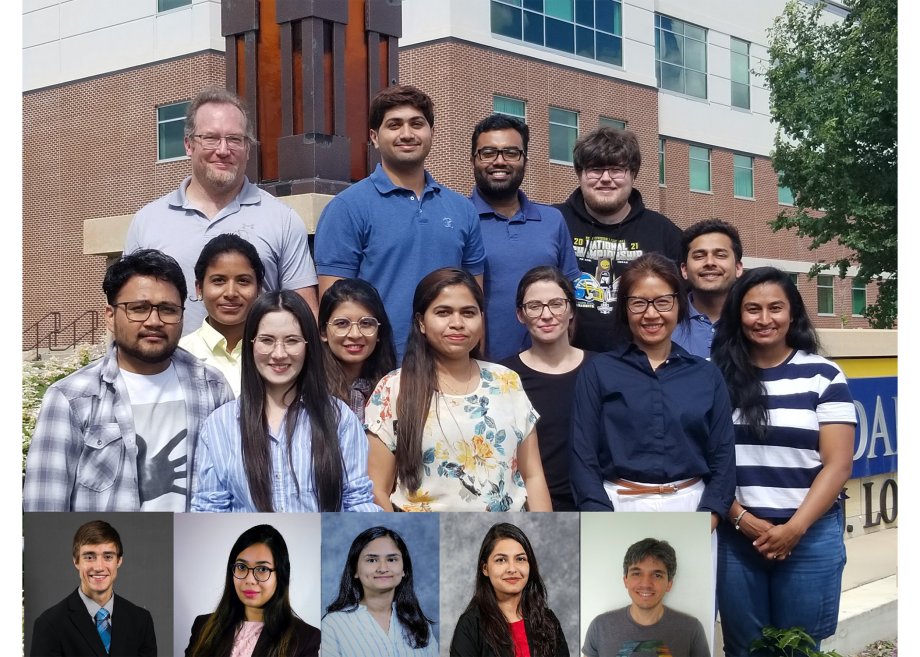
South Dakota State University's world-renowned Image Processing Lab was recognized by the National Aeronautics and Space Administration during the 2022 Robert H. Goddard Awards, held earlier this year.
Larry Leigh, director of the lab, and the rest of the Landsat Calibration and Validation Team received the Robert H. Goddard Science Award for "Exceptional Achievement for Science." The Science Award is given to individuals and teams demonstrating "excellence in enabling the nation's scientific discovery by sharing the (NASA Goddard Space Flight Center's) unique capabilities, providing customer-centered leadership or by engaging in activities that demonstrated Goddard's unique role as a federal laboratory."
"I am quite honored with the award and humbled by the recognition of the impact the lab had in the successful checkout and calibration of Landsat 9," Leigh said. "I want to thank everyone in the lab who contributed to this effort."
Team members—a mix of undergraduate and graduate students as well as staff members—include Cibele Teixeira Pinto, Morakot Kaewmanee, Garrison Gross, Pedro V.C. Oliveira, Juliana Fajardo Rueda, Dinithi Siriwardana Pathiranage, Rahul Shah, Ramita Shah, David Aaron, Meghraj K.C., Faria Jahin, Padam Karki, Neha Khadka, Manisha Das Chaity and Prathana Khakurel.
The Image Processing Lab, which is located on the top floor of the Daktronics Engineering Hall, develops state-of-the-art calibration and validation algorithms for the Landsat 9 satellite by taking images acquired from space and transforming them into high-quality datasets. This is done by correcting errors in the data, assigning absolute SI units and validating results with ground truth.
"We are incredibly proud of our Image Processing Lab," said Rajesh Kavasseri, associate dean for research for SDSU's Jerome J. Lohr College of Engineering. "Their work on satellite-sourced datasets are used in monitoring, understanding and managing the earth's natural resources needed to improve the quality of human life. Undeniably, their impact is global."
The work done by the lab is supported by the U.S. Geological Survey, NASA and numerous commercial and governmental agencies around the world. Google Maps—for example—relies on the work done by SDSU's Image Processing Lab to ensure its imagery is accurate and up to date.
"When I started as a student at SDSU, I was always fascinated with space and science," Leigh recalled. "I always wondered how I might find a place in this world, so it always surprises me that I was able to find a place at SDSU, in a lab that I now oversee, with such a worldwide impact on satellite calibration and that we are known and recognized by NASA as having the unique capability to support on-orbit checkout and calibration of sensors on orbit.
"It still amazes me that we have such a direct involvement in how new satellites should be calibrated and operated during these critical checkout phases," Leigh added.
NASA cited the team's efforts "supporting the fall 2021 launch of the Landsat-9 OLI and TIRS and helping to preserve Landsat data continuity" during the awards ceremony.
- Contact:
- Telephone number: 605-688-6161
Republishing
You may republish SDSU News Center articles for free, online or in print. Questions? Contact us at sdsu.news@sdstate.edu or 605-688-6161.

